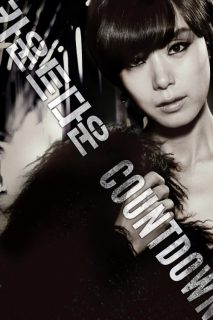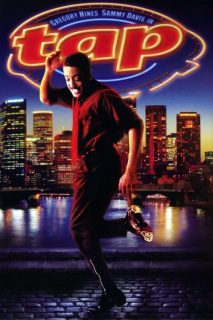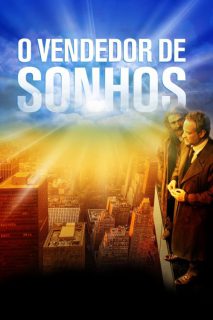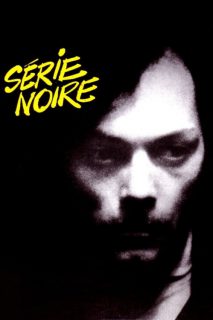
- Year: 2000
- Released: 27 Jan 2016
- Country: Thailand, Netherlands
- Adwords: 4 wins & 4 nominations
- IMDb: https://www.imdb.com/title/tt0269587/
- Rotten Tomatoes: https://www.rottentomatoes.com/m/mysterious_object_at_noon
- Metacritics: https://www.metacritic.com/movie/mysterious-object-at-noon
- Available in: 720p, 1080p,
- Language: Thai, Sign
- MPA Rating: Not Rated
- Genre: Documentary, Drama, Fantasy
- Runtime: 89 min
- Writer: N/A
- Director: Apichatpong Weerasethakul
- Cast: Djuangjai Hirunsri, Kongkiat Khomsiri, Saisiri Xoomsai
- Keywords: politics, political unrest,
 | 6.8/10 |
 | 69/100 |
 | 88% – Critics |
 | 73% – Audience |
Mysterious Object at Noon Storyline
This film is an experimental mix of documentary and fiction. The film crew travels from the Thai countryside to Bangkok, asking the people they encounter along the way to continue a story about a handicapped boy and his teacher.
Mysterious Object at Noon Play trailer
Mysterious Object at Noon Photos



Mysterious Object at Noon Torrents Download
| 720p | bluray | 819.7 MB | magnet:?xt=urn:btih:7C6BB6E6F650597D406A3DBAA20AA60D1F6C40D1 | |
| 1080p | bluray | 1.64 GB | magnet:?xt=urn:btih:53CC794D6C35F6F417BB202AB1524D63ED223E2A |
Mysterious Object at Noon Subtitles Download
Mysterious Object at Noon Movie Reviews
A Great Experiment In Docudrama
*Possible Spoilers*
Director Apichatpong Weerasethakul crafted one of the more unique debut films to appear in quite a while with MYSTERIOUS OBJECT AT NOON, which generated a significant buzz on the global festival circuit and seems to mark the beginning of a very promising film career.
Weerasethakul’s dreamy not-quite-drama, not-quite-documentary opens with a view down a freeway, taking in the skyline of Bangkok (in opening scenes that evoke the infamous ‘freeway’ scene in Andrei Tarkovsky’s SOLARIS), before gliding down a highway exit into progressively smaller side streets, eventually ending up in a neighborhood and finding the first of his many subject/character/author/collaborators (nearly everyone appearing in the film is simultaneously all four). A woman relates a grim, true story and pauses before spinning off into another story, this one invented. Weerasethakul starts with the shard of a story invented here, and – using the Surrealist ‘Exquisite Corpse’ game/technique – asks everyone else he encounters to add to it – then editing the results (after three years of compiling footage) into MYSTERIOUS OBJECT.
With a story that is invented – as both an experiment in film, and a piece of collectively generated contemporary folklore – almost literally as you watch (excepting Weetasethakul’s editing – the finished product was stitched together from 3+ hours of footage), this film shatters all kinds of boundaries – between experimental art and folklore, between fiction and documentary, between numerous stylistic genres, and between author/artist/creative mind and spectator/viewer/consumer. The individuals appearing in the film are non-actors; the story, which starts as a folkloric tale about a handicapped boy and his teacher, veers off into something resembling mythologic sci-fi. Throughout MYSTERIOUS OBJECT, bits of documentary footage suddenly give way to seamless reenactments of the story (as it is being told), often interspersed with ‘found’ bits of news footage or soap operas (which all seem to end up commenting on the narrative as it evolves); in one scene late in the film, the director and crew step into the film, revealing (in their workmanlike actions) some of the process behind it all, and incorporating that into the ever-evolving story as well.
The cinematography of MYSTERIOUS OBJECT reminded me somewhat of BREATHLESS – the stories are dissimilar, but the grainy, atmospheric black-and-white look is pleasantly similar, and they share an energetic willingness to tinker with notions of what films can or can’t be. And – without resorting to exoticism, cuteness or pandering to any outside cultural expectations, a variable view of Thailand is offered, moving with ease across the varied religious, cultural and economic divides in Thai society. The consistently rich and affectionate glimpses of rural and urban landscapes and the diversity of the participants makes for compelling viewing – experimentalist or not, Weerasethakul gives everyone the opportunity to reveal his or her own personality during their shining moment on screen, creating a kaleidoscope of humor, quirkiness and/or mundane realism.
The end result is a surprising mix of the avant-garde and the affectionate, infused with both a great love of intrepid experimentalism and of Thai life and society at its’ most everyday and average, and offering a great meditation on creativity as well in this remarkably crafted and most unusual film.
Trying To Figure This One Out
Director Apichatpong Weerasethakul went around Thailand with a film crew for three years, having what seem to be random people tell a round-robin story. One person would tell one part, then on to the next. It’s a technique I’ve seen used in a couple of amateur-press stories from the 1930s, when professional science fiction writers were cheap — the line was that WONDER STORIES offered a quarter cent per word, payable upon lawsuit. One writer would start the story, another would continue for a few pages, and so forth.
As a story-telling movie, it’s …. well, it’s an interesting experiment that does not work. The writers in the 1930s round-robin stories were pros, who understood how plotting worked and how far they could veer. With this one, we watch people do a hard left on the story, argue about what has been been decided earlier in the story. It’s less like the way in LOVE ME TONIGHT, the song “Isn’t It Romantic?” wafts from Paris to a distant castle, changing to various tempi along the way, and more like the way my great-aunt Esther would tell a story. She would drone on for about thirty minutes, pause to make sure I understood some point — “…so they had to find the money for the rent. If they didn’t pay the rent, they could be out on the street, you know what I mean?” After I would tiredly admit that I understood eviction, she would continue with “So once I knew this guy, I think I met him through my friend Rosie from high school, he had a picture of Rutherford B. Hayes on his kitchen wall next to the electric clock.” Then she would talk about the clock for half an hour. Not that there was anything interesting about the clock; had there been, I think, she would never have mentioned it at all.
That’s what the story-telling in this reminds me of. Oh, the people are trying to tell a good story, but they lack the training.
What I think this movie works as is a city-symphony picture, one of those movies in the 1920s and 1930s which purported to show you Berlin in BERLIN, SYMPHONY OF A GREAT CITY or New York in MANHATTA. I think it works better as that, although it’s less about the city and the countryside, their institutions and rhythms, than individuals.
Creates a mood of tranquility
A camera attached to a moving car takes us down a busy city street in Thailand. Abruptly, the car turns into a narrow alley where we see brush grass and run down shacks. As the camera enters one of the houses, a heavy-set woman speaks of the trauma involved in her being sold into prostitution by her father. When she is finished, an off-camera voice asks her to tell another story, real or fiction. It is then that we begin to sense that cinematically we are in unchartered territory. Internationally acclaimed Thai director Apichatpong Weerasethakul’s first feature Mysterious Object at Noon is an offbeat mixture of reality and fiction in which there is no screenplay or linear narrative, only a story created and added to by each participant in the mode of the French game “exquisite corpse”.
The story the woman first tells is that of a teacher named Dogfahr whose young pupil is a cripple confined to a wheelchair. The tale is then dramatized on screen by non actors alternating with the talking storyteller. As the camera moves north and south of Bangkok into the Thai countryside, a cross section of Thai’s continue the story by adding a few lines. These include two deaf girls using sign language, a song and dance troupe, and children in a rural Thai school. With each addition, the tale becomes vastly different and increasingly fantastic. The mysterious object in the title falls from the teacher who has collapsed and turns into an extraterrestrial boy with strange powers, a duplicate teacher, and finally a “witch tiger” and a magic sword.
Some sequences stand by themselves and are without any relation to the continuing storyline. The teacher brings her father to the doctor for a hearing test and complains of a strange line around her neck which the doctor dismisses as an allergy or the effect of wearing her necklace. Parents talk of a boy who escaped death in a plane crash because he was protected by amulets, and a scene shows women bargaining at a fish market. An experimental film with a small budget shot in 16-millimeter black and white, Mysterious Object at Noon glows with warmth and playfulness. As it progresses, it also slows down and becomes more of a meditation on Thai culture, creating a mood of tranquility and peace. Like Seinfeld, it is ostensibly “about nothing”, but turns out to be about everything.



